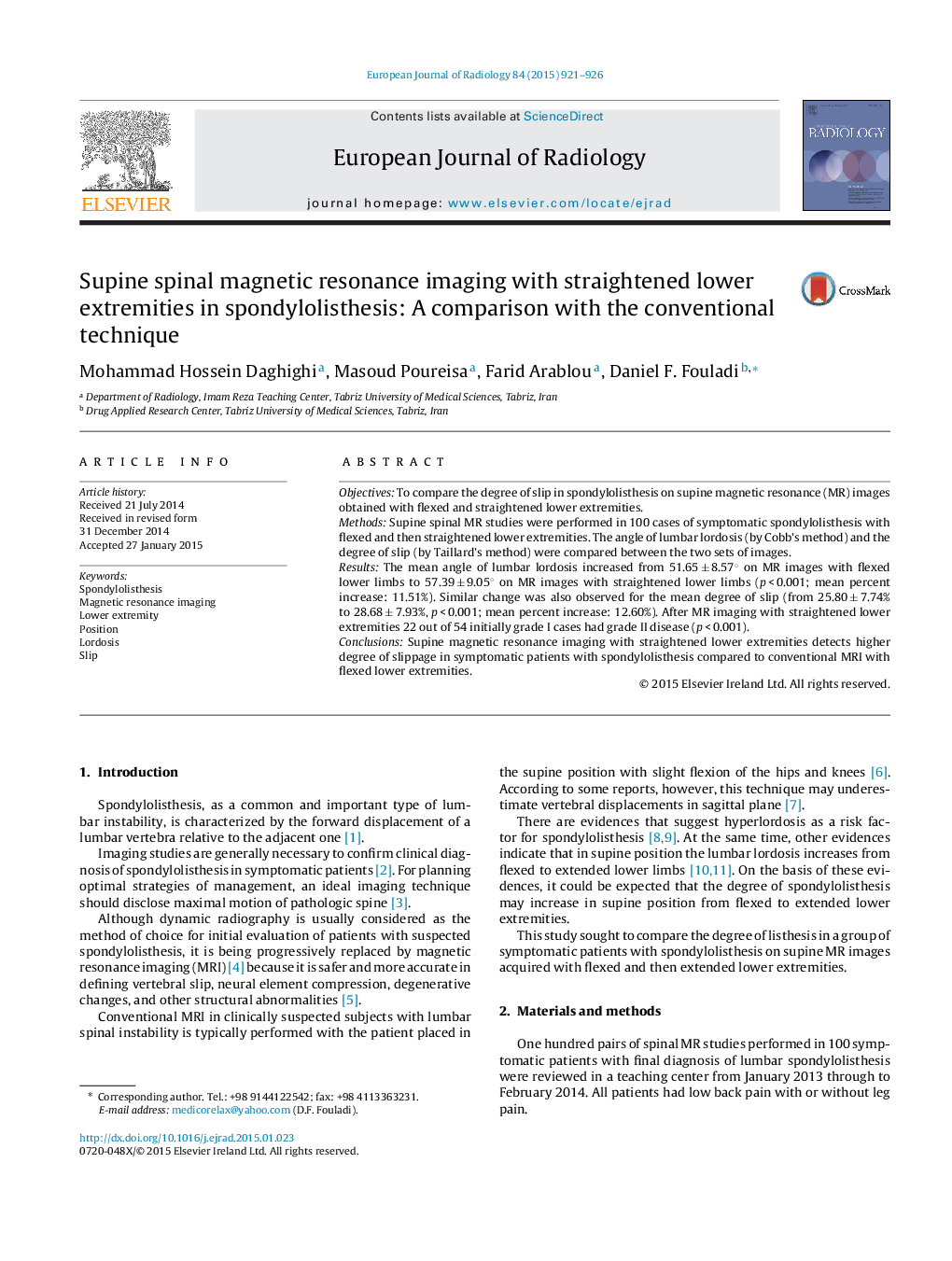| Article ID | Journal | Published Year | Pages | File Type |
|---|---|---|---|---|
| 4225423 | European Journal of Radiology | 2015 | 6 Pages |
•MR imaging with straightened lower extremities was tested in spondylolisthesis.•This technique is more accurate than conventional MR imaging in detecting slip.•Level of spondylolisthesis is the only independent predictor of severity of slip.
ObjectivesTo compare the degree of slip in spondylolisthesis on supine magnetic resonance (MR) images obtained with flexed and straightened lower extremities.MethodsSupine spinal MR studies were performed in 100 cases of symptomatic spondylolisthesis with flexed and then straightened lower extremities. The angle of lumbar lordosis (by Cobb's method) and the degree of slip (by Taillard's method) were compared between the two sets of images.ResultsThe mean angle of lumbar lordosis increased from 51.65 ± 8.57° on MR images with flexed lower limbs to 57.39 ± 9.05° on MR images with straightened lower limbs (p < 0.001; mean percent increase: 11.51%). Similar change was also observed for the mean degree of slip (from 25.80 ± 7.74% to 28.68 ± 7.93%, p < 0.001; mean percent increase: 12.60%). After MR imaging with straightened lower extremities 22 out of 54 initially grade I cases had grade II disease (p < 0.001).ConclusionsSupine magnetic resonance imaging with straightened lower extremities detects higher degree of slippage in symptomatic patients with spondylolisthesis compared to conventional MRI with flexed lower extremities.
